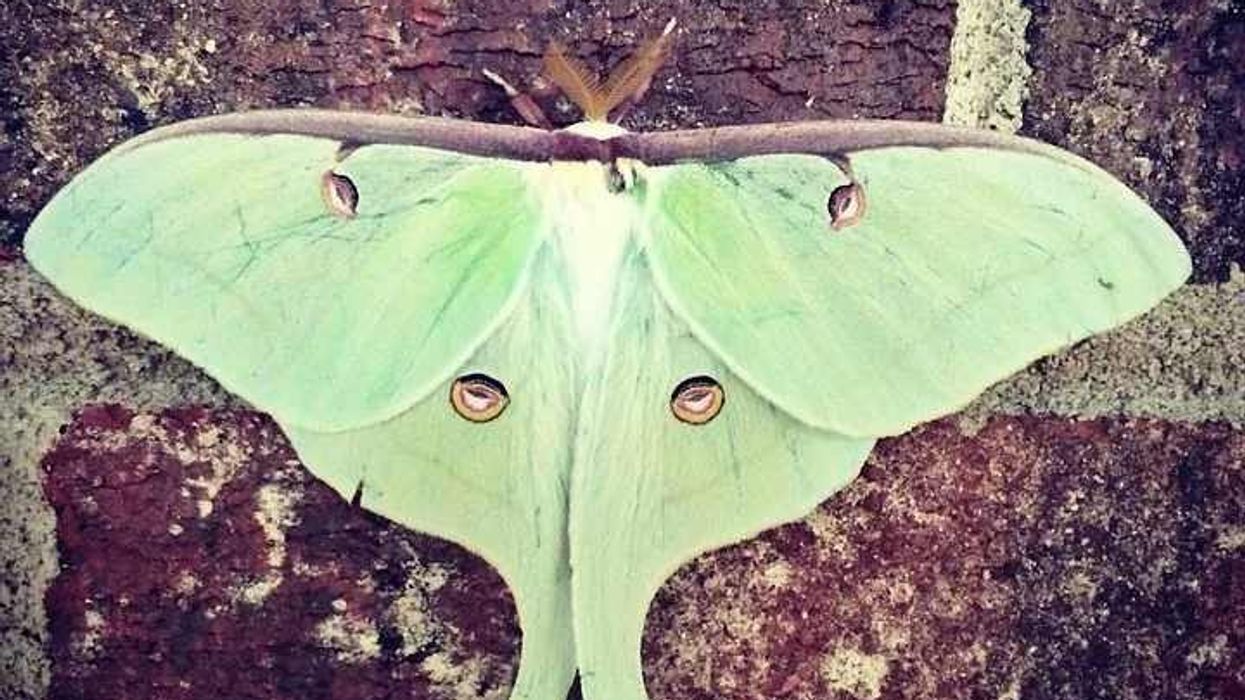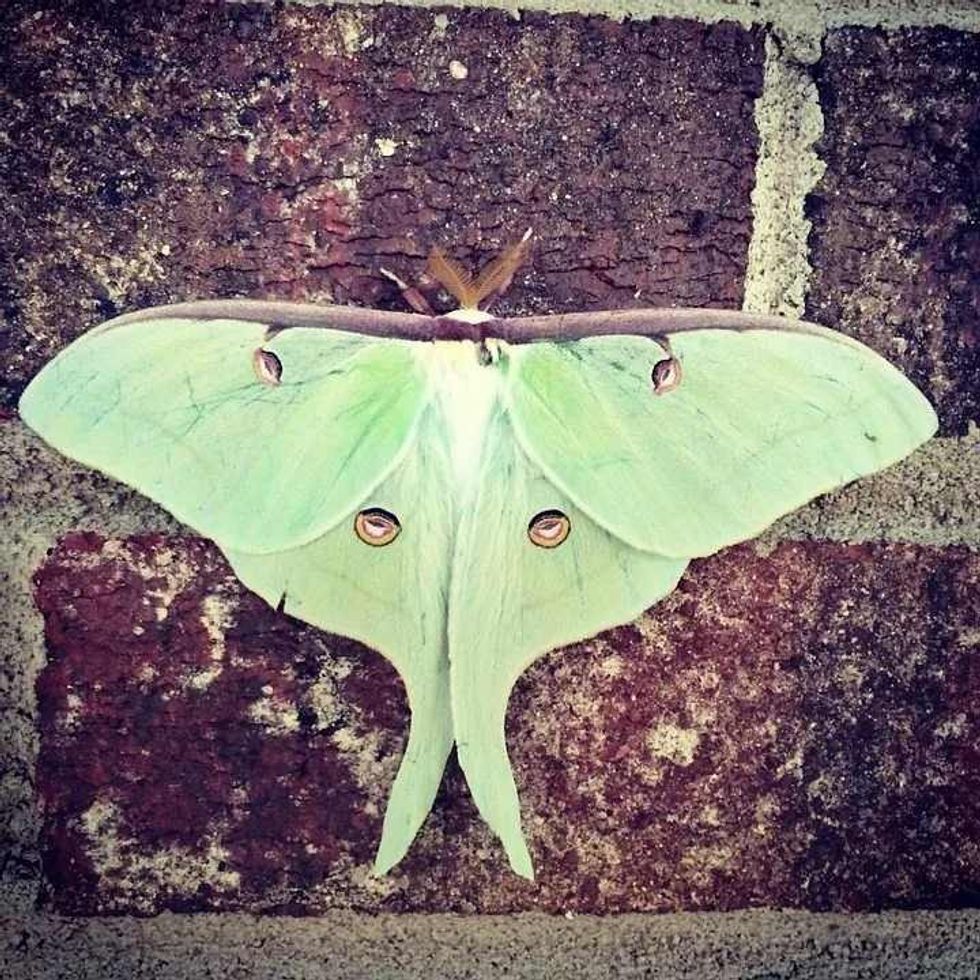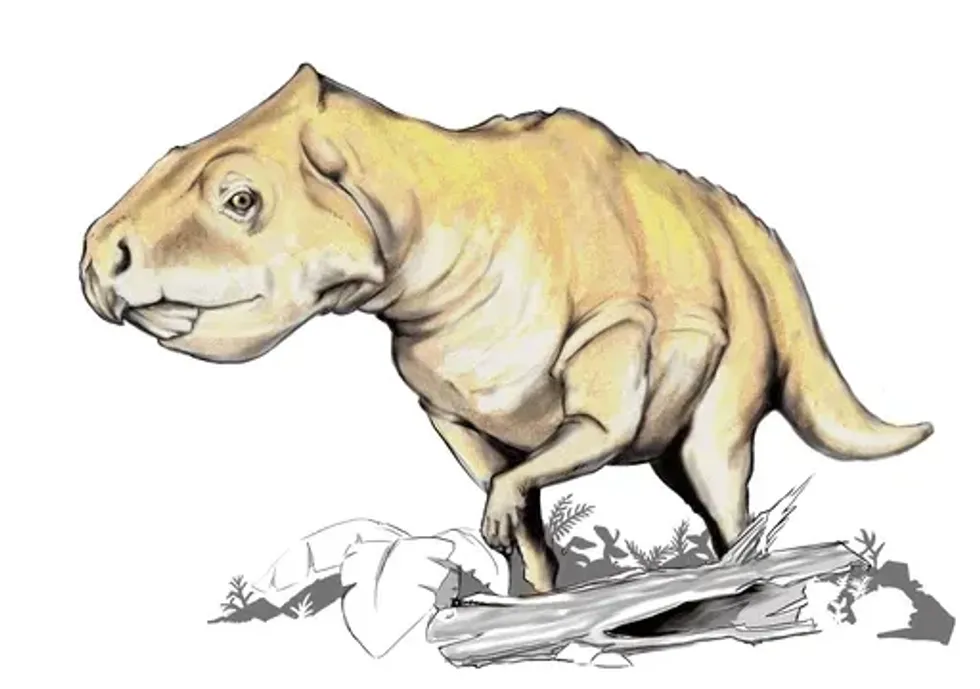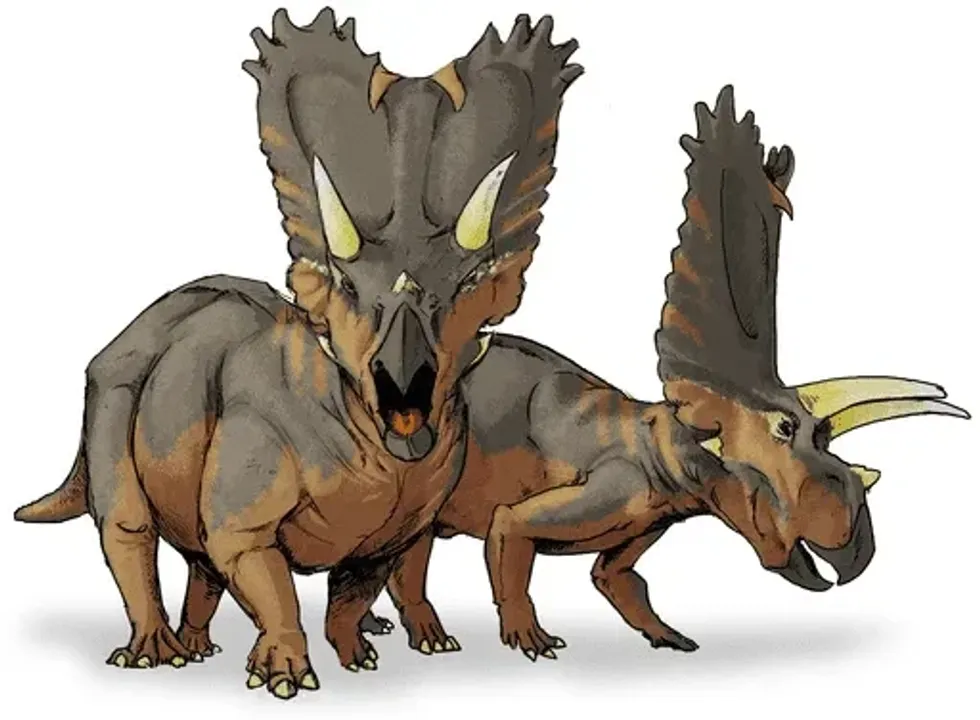The luna moth (Actias luna) is one of the larger moths belonging exclusively to North America. In Canada, this species can be found in Central Quebec and the Nova Scotia region. Further south, in the United States, luna moths are seen from Maine to Florida. Adult luna moths are seen in forest and woodland areas.
In the year 1700, James Petiver described and named this species as Phalena plumata caudata. This became the first species of the Saturniidae family in North America to be described in their insect literature.
Later, Linnaeus changed the name to Phalaena luna and subsequently to Actias luna. The name 'luna' came from the Roman moon goddess.
Commonly, this species came to be called the luna moth meaning, moon moth. The hindwing tails of this species are one of its most beautiful features.
The wingspan varies in length and can range between 3-4.5 in or 76.2-114 mm. The moth luna also displays a variety of defense mechanisms to protect itself from predators.
Some of the common host plants from which the larvae and caterpillars of the luna moth feed are white birches and sweet gum. These moths have also adapted to the consumption of certain host plants which are toxic to other insects.
Continue reading more fun and interesting luna moth caterpillar facts and luna moth facts for kids written below! If you find this article interesting, you can also read about the gypsy moth and morpho butterfly.
Luna Moth Interesting Facts
What type of animal is a Luna Moth?
Actias luna (Linnaeus) or the luna moth is a kind of insect. They are seen in North America and stand out for their beautiful lime green wings.
What class of animal does a Luna Moth belong to?
Luna moths belong to the class Insecta. They are a part of the Saturniidae family, which also has giant silk moths.
How many Luna Moths are there in the world?
The population of these North American luna moths is not exactly known. Though their numbers have declined over the years, mainly due to loss of habitat and the use of vapor lights, they still continue to maintain a steady population in the wild. Hence, they have not been deemed as threatened.
Where does a Luna Moth live?
Luna moths are usually seen in the woodlands and in the region of forests. In Canada, these moths of North America are seen in a wide range from Nova Scotia through areas like Quebec and central Ontario. In the United States, the moth can be seen from Florida to Maine, in the eastern region of the Great Plains.
What is a Luna Moth's habitat?
The luna moth (Actias luna) is usually seen in deciduous kinds of woodlands. This habitat mainly falls under the temperate region. There is a presence of trees like walnut, sumacs, hickory, and so on in this region. The luna moth caterpillars feed on these.
Who do Luna Moths live with?
Luna moths tend to be a solitary species. They usually come together only for mating. Some of these moths of North America are also kept in captivity with humans for research and educational purposes.
How long does a Luna Moth live?
The total lifespan of a luna moth, Actias luna (Linnaeus), is between 9-11 weeks. During their life cycle, they spend six to seven weeks as larvae, two to three weeks as bigger luna moth caterpillars, and then finally, only about a week as adult luna moths.
How do they reproduce?
In the luna moth, Actias luna, the species display secretion of pheromones in order to mate. The female luna moth attracts the male luna moth with the help of their pheromones.
This is a form of chemical communication. On catching the scent of the female luna moth, the male will follow its trail and overcome all obstacles to reach the female.
The first male luna moth which reaches the female is chosen by her to mate. Being a nocturnal species, mating takes place at night. Once fertilization has occurred, the female will lay her eggs on the underside of the leaves in any host plant.
Females usually lay 200-400 eggs, and the eggs hatch in about 10 days. Some luna moth populations complete several generations in a year using this method.
For example, in the south of the US, the first birth of luna moth caterpillars takes place in March. The next generations are born within a gap of 8-10 weeks.
What is their conservation status?
The conservation status of luna moths has Not Evaluated by the International Union for Conservation of Nature or the IUCN. This species is not rare and can be found in various forest regions in North America. However, they are rarely seen.
This is because they are nocturnal in nature and also have very short lives as adults. According to NatureServe, the conservation status of this moth (Actias luna) has been marked as Secure.
However, their numbers have decreased since the 1960s, due to the destruction of their habitats by human activities. The increased use of vapor lamps has negatively affected their mating rituals too. They also fall prey to bats and certain invasive flies like Compsilura concinnata.
Luna Moth Fun Facts
What do Luna Moths look like?
Luna moths have lime green wings with a white and hairy body. Their wings are quite big and can measure up to 4.5 in(114 mm). They have eyespots on their forewings and hindwings, which are used to deter predators. The females usually have bigger abdomens, as they carry their eggs there.
Both, males and females, also have a special tail that extends from the end of the hindwings. The males have much longer antennae. In the northern region, they seem to have blue-green wings.
How cute are they?
Luna moth (Actias luna) is one of the most brilliant looking moth species in the region where they exist. Adult luna moths display a characteristic hindwing tail, which adds to their unique features. Even the luna moth caterpillar is quite eye-catching with a green body, which is quite cute.
How do they communicate?
The larvae make a distinct clicking noise with the help of their mandibles to warn predators. These sounds are audible to humans as well. They also regurgitate the contents of their gut to keep predators away.
The adults flutter their wings vigorously when attacked. For mating, they secrete pheromones which are specific to other moths of the same kind. They usually remain absolutely still among piles of leaves in the ground, as their color provides the perfect camouflage in the leaf litter.
How big is a Luna Moth?
An adult luna moth can measure anywhere between 3-4.5 in or 76.2-114 mm. However, during their larvae stages, they have varying measurements. The adult luna moth is considered to be bigger than most moths, due to its large wingspan.
How fast can Luna Moths fly?
Since these moths are nocturnal, they remain motionless during the day unless disturbed. During the night, they are known to fly quite strongly, with the help of their big wings.
How much does a Luna Moth weigh?
Even though the exact weight of luna moths is not known, they are one of the largest moths in North America. During their caterpillar stage, they are known to feed on a huge quantity of food which increases their weight by 4,000 times.
To accommodate this growth, they transform four times to reach the final phase of their larval stage.
What are their male and female names of the species?
The male and female of this species are known as male luna moth and female luna moth, respectively.
What would you call a baby Luna Moth?
Baby luna moths are known as caterpillars or larvae.
What do they eat?
The luna moth caterpillars feed on a variety of broadleaf host plants. They are especially fond of hickory, white birch, walnut, and American persimmon.
The American sweet gum is also a very common host plant for these creatures. However, it is an interesting fact that only the caterpillars are capable of eating.
Once these creatures come out of their cocoon, the adult moth have no digestive systems or mouths. Their main function is to reproduce during this phase and they gain their energy from the food they had during their caterpillar phase.
Are they dangerous?
The luna moth (Actias luna, Linnaeus) is completely harmless. Unlike some species of butterflies and moths, the lunas do not carry any poison. Hence, these moths are also eaten by some predators.
Would they make a good pet?
Since luna moths are very good-looking and aren't dangerous, they can be kept as pets. They need to be provided with sufficient leaves till they become fully grown. These moths are usually kept in classrooms to teach about their life cycles and other characteristics. They are also used in various research fields.
Did you know...
The beauty of the luna moth led to it being printed on a postage stamp in the United States in the year 1987.
Linnaeus changed the name of this moth to Actias luna in the year 1758. The special epithet 'luna' was given because the moth has spots that resemble the moon.
One of the unique defense mechanisms used by these moths includes their special hindwing tails. They use their tails to interfere with the echolocation method of predation by bats. They move their tails in such a pattern that the echolocation used by bats is distorted.
Becoming the Luna Moth
After the eggs hatch, the larvae come out of the eggs. The larvae undergo five stages of transformation or molting.
When they first hatch out of the egg, they measure 0.24-0.31 in (6-8 mm). The second, third, and fourth phases are characterized by 0.35-0.39 in ( 9-10 mm), 0.47-0.63 in (12-16 mm), and 0.91-1.02 in (23-26 mm), respectively.
In the final phase, they have a length of 2.8-3.5 in (70-90 mm). Each stage lasts for a few weeks.
At the end of each of these phases, the instar (developing stage in between) sheds its old exoskeleton. During their caterpillar stage, they appear bright green in color. There is also the presence of small yellow or magenta dots along the sides of the caterpillars and their bodies are covered in small and white hair.
Just before they make their cocoon, they become reddish in color. The luna moth cocoon is usually found in leaf litter, which acts as camouflage.
Depending on the temperature and some other factors, the pupation (change from immature to mature stage) can range from two weeks to nine months. Following the end of pupation, the adult luna moth emerges from the cocoon.
Symbolism of Luna Moths
There is deep symbolism associated with the luna moth (Actias luna). These moths are said to be a representative of the human soul, itself. They signify rebirth, regeneration, and renewal of spirit and the human body.
They are also associated with heightened awareness. Seeing a luna moth usually means that some change in your life is going to happen soon. The beauty of luna moths, like many other butterflies and moths, makes them the icon for self-reflection and transformation.
Here at Kidadl, we have carefully created lots of interesting family-friendly animal facts for everyone to discover! Learn more about some other arthropods including purple emperor butterfly, or damselfly.
You can even occupy yourself at home by drawing one on our Luna moth coloring pages.










